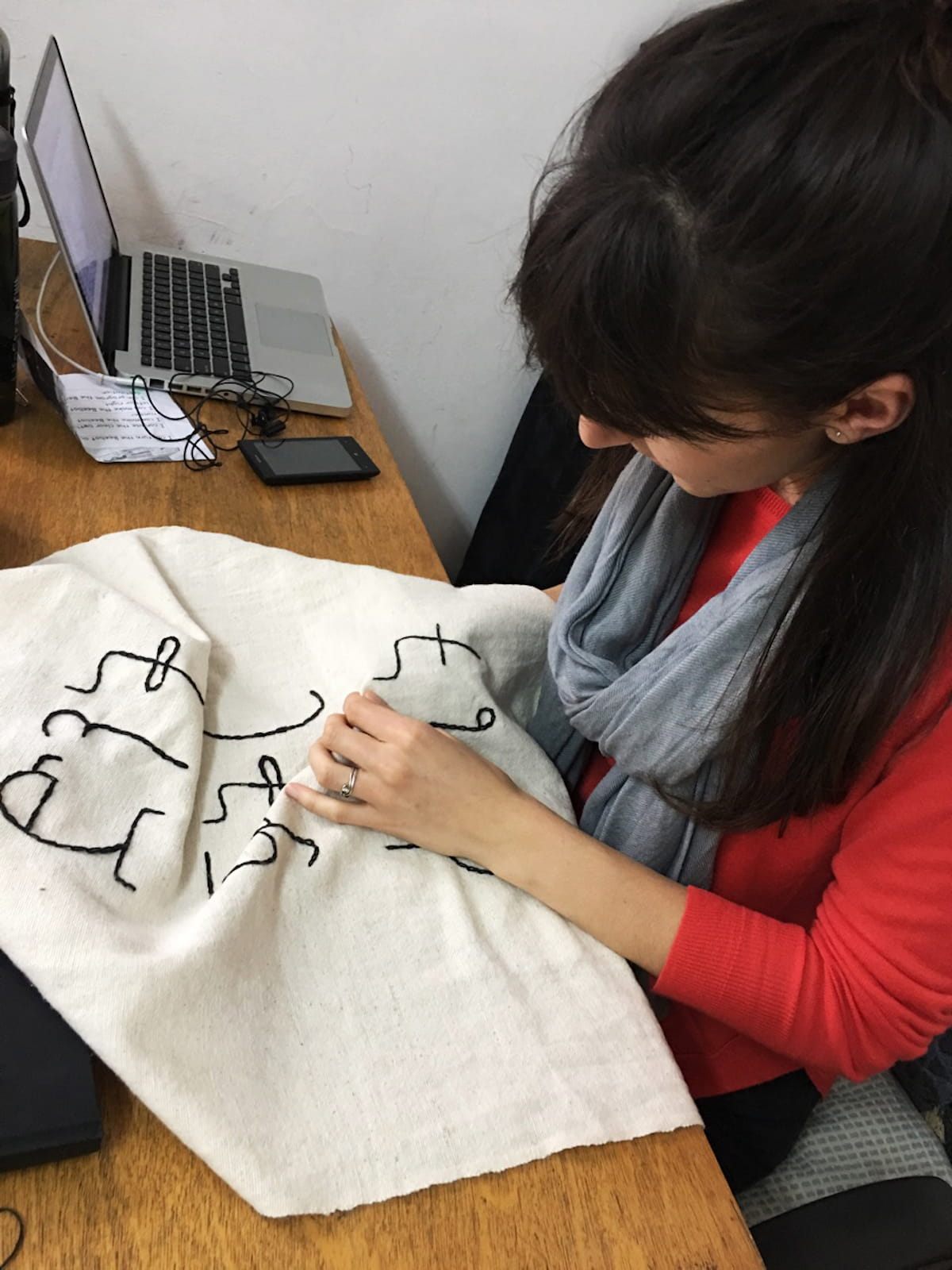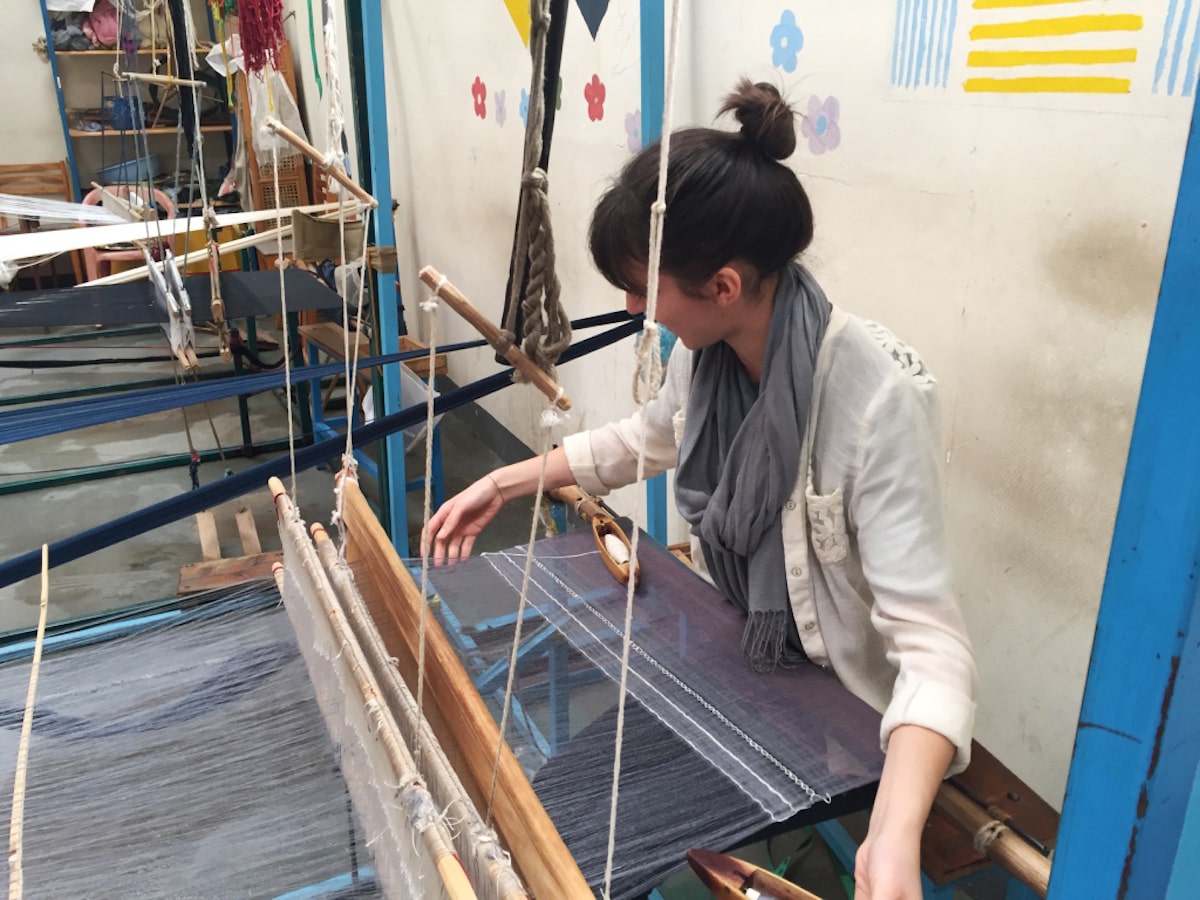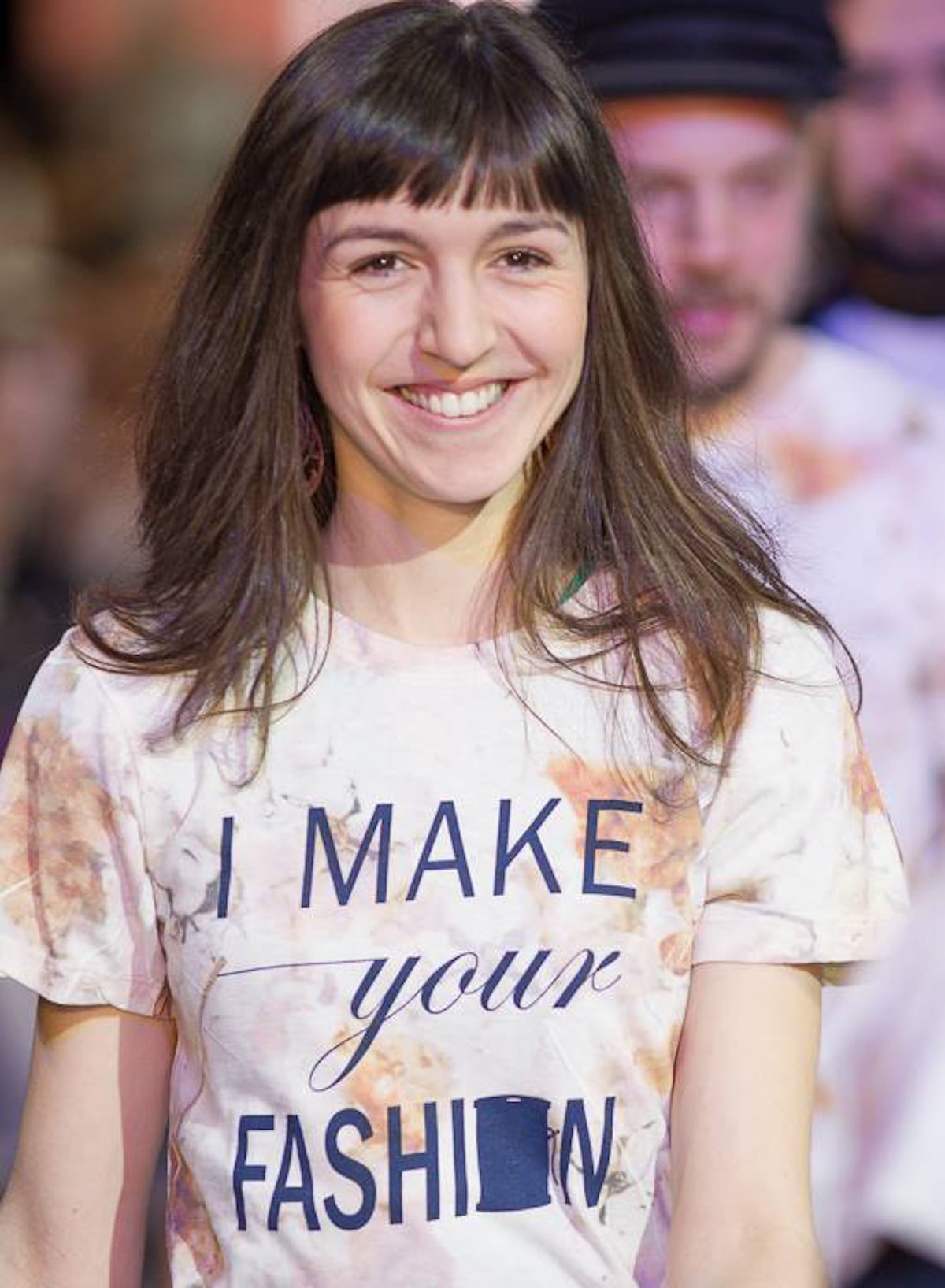ABURY meets ADEx designer Ruth Hepburn
Posted on 16 April 2019
“I’m not satisfied with mediocrity in my own life or in the fashion industry, but I choose to be motivated by kindness in my pursuit of positive change.” This is how Ruth introduced herself at our global designer contest, the ABURY Design Experience 2017. If it was her motivation and visionary spirit to generate positive change in the fashion industry or her deep understanding of woven fabric that convinced the jury and brought her the title of the ADEx winner 2017 - who knows. Most likely it was a combination of all. Ruth Hepburn is from the UK where she completed her studies Woven Textile Design, before moving to Toronto in Canada, where she is living today. As part of the ABURY Design Experience 2017, she went for four weeks to work and live with the Ethiopian weaving community Sabahar, and developed a new collection for ABURY that is entirely handwoven from locally sourced Ethiopian cotton. Find out more about designer Ruth, about her hands, about her experience in Ethiopia and about her collection:
Start by tagging yourself with three words.
Kind. Growing. Impulsive.
We believe that “hands tell stories“. What do your hands tell about you?
Probably that I’m ok with getting them dirty! I realised many years ago that nail polish could never be an everyday routine for me because there was too high a risk of it getting poked with a needle or splattered with paint!

What is the last thing you created with your hands?
It’s actually still in progress… I am working on a series of woven art pieces inspired by the Japanese art of kintsugi - a technique where broken ceramics are mended with gold. I’m still in the initial experimentation stages at the moment, but it’s an exciting place of embracing possibilities and testing out some new techniques on the loom.
If you could choose, what would you like to be able to do with your hands?
I would do less typing and scrolling and more making! I find the physical process of creating something with my hands to be great therapy and expression, and for any design work I do I actually struggle to conceptualise and progress an idea without getting it into physical form somehow. For me the ideal week would include a lot of time weaving, but also space to draw, embroider, knit and hold a real book in my hands.
Our blog “One of a mind” underlines our strong belief in equality and the value of sharing. How does intercultural exchange benefit our global society in your eyes?
When inter-cultural exchange is done well, it is beautifully eye opening and enriching to both parties. By sharing ourselves and our culture with one another, we can begin to break down barriers of fear and prejudice that can creep in when our own way of life remains unchallenged. But I think we all need to make sure it is the right kind of exchange - where people are treated as equals and are not reduced to being bearers of some ‘exotic’ skill or commodity. I recently saw a play in Toronto by Janice Jo Lee (a Korean-Canadian writer, actress and musician) that dealt with some of the issues that people of colour face in a white-dominant society, where she challenged the white people in the room: “You want our food, you want our music... but you don’t want us”. A true crime in cultural exchange is when there is an imbalance of power. I think if we are humble in our exchange, valuing the people themselves as well as their traditions or what they can do, then we could make huge steps forwards with empathy, compassion and justice on a local and global level.

You were the winner of the 3rd ABURY Design Experience and went to Ethiopia to design our new capsule collection. In your opinion, what differentiates Ethiopia from other countries? What does it have that no other culture has?
That’s a tricky question! Being there for such a short time I am loathe to make any sweeping statements, but what I did observe is that many Ethiopians seem to place a high value on tradition and connection with people. As a nation they have a long and rich history which they are very proud of, and they also have regular rituals and celebrations that encourage connection with family and friends, like the coffee ceremony and the various religious holidays that occur throughout the year. In the West nowadays life sometimes feels like it has to be lived at a relentless pace, barely stopping to appreciate where we have come from or celebrate the present moment, so I think we could learn a lot from Ethiopian culture in that regard.

What have you learned from your work with traditional artisans? How did this experience impact you and your life after you went back home?
I came away with a greater dose of humility and a renewed commitment to collaboration. It is so easy as a designer to guard your creative vision too closely, and - sometimes even subconsciously - make a project about your own ideas instead of honouring all the hands and voices that have contributed to make it a success. Sabahar was a true inspiration to me in this; like a family, each person is valued for what they can bring to the whole, and the result is only achieved when everyone plays their part. It was a privilege to work alongside them and be granted access to their strong community as well as their technical expertise.
When you think back to the weeks that you lived there, is there a moment that was particularly memorable for you?
As a weaver, one of the most exciting moments of the process is when you unroll the fabric you have made from the loom and cut it off - it’s the point of no return, where you can see the whole cloth for the first time. In Ethiopia, I had one particularly special moment like this; I had been working with Jack, one of the Sabahar master weavers, on some woven samples for the collection, and the time came to cut off the fabric from the loom. As we rolled it off the loom’s beam, many of the other men and women in the workshop came and gathered around to watch, and it was this amazing shared moment of accomplishment where we could all look at this fabric that we had worked on together. The sample was passed around the room, and one of the ladies even spontaneously draped it around herself like a scarf! It was really special to see the excitement and pride that the weavers had in their skill and tradition, and to share in that moment with them.

Talking about other senses - how would you describe the “Tastes of Ethiopia” and what is your favourite?
Incredibly delicious! Ethiopian food is rich and flavourful, with vibrant spice blends and great variety for vegetarians. I am very lucky in Toronto, where I have a number of Ethiopian restaurants and grocery stores within 15 minutes walk from my house, so whenever I miss my time there I can have this point of connection. My favourite dishes are shiro wot (a simple sauce made from spiced chickpea flour, onions and tomatoes) and gomen (kale or collard greens cooked with ginger and chilli), served (of course!) on top of the traditional injera bread.
We are very excited about the launch of the new collection from Ethiopia. Which one is your favourite piece of the collection and why?
Me too!! Throughout the whole design process I was conscious of trying to respect our resources and the labour intensive weaving process by minimising fabric waste, so my favourite piece has to be the XL Hobo Shopper Bag as I feel it best encapsulated that philosophy. Due to clever folding and the use of offcut fabric for the handle and interior pockets, the bag produces no fabric waste at all. It was actually one of the hardest pieces to get right, but I think as with many things that are a challenge, the hard work makes it even more worth it when you reach the end result!
© All photos via Ruth Hepburn




0 comments